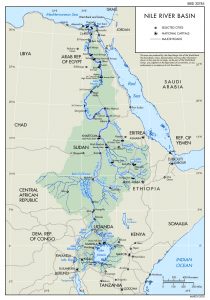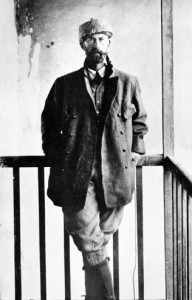Amazon
Gilligan, Gary*
 Gary Gilligan (1957- ) is a British author who has “studied Egyptology, Astronomy and Geology with an almost obsessive passion. When he first came across the theory of catastrophism, he was intrigued by the possibility that the Solar System had undergone recent upheavals due to cosmic chaos.”
Gary Gilligan (1957- ) is a British author who has “studied Egyptology, Astronomy and Geology with an almost obsessive passion. When he first came across the theory of catastrophism, he was intrigued by the possibility that the Solar System had undergone recent upheavals due to cosmic chaos.”
Gilligan is arguably the most radical of the catastrophists and ancient chronology revisionists publishing today. Some of his ideas make those of Velikovsky as well as James and Rohl seem somewhat tame.
Among his many extreme claims are (1) Our Moon was only captured in the first millennium BC(a), (2) The Saharan sands, he claims are extraterrestrial in origin [1365], (3) The ancient year had only 360 days [1385.61] and (4) The ancient Egyptian climate was milder than today as indicated by a red sun, rather than today’s yellow disk!(c)
In a short 2012 paper now republished in October 2022 on the Thunderbolts website Gilligan proposes that the Amazon rainforest is only a few thousand years old. He argues that the Amazon region is today dependent on the 54,000 tons of fine dust received daily from the Sahara and since the Sahara did not exist 6,000 years ago neither did the Amazon rainforest which he says is claimed to be 55 million years old!(d) However, an article from Scientific American (July 7, 2014) also offers an even more recent date for the development of the rainforest, suggesting that “the people of the Amazon from2,500 to 500 years ago were farmers.”(e)
(a) http://www.gks.uk.com/moon-origin-egyptian/
(b) http://www.everythingselectric.com/forum/index.php?topic=347.0 (link broken) *
(d) https://en.wikipedia.org/wiki/Amazon_rainforest
(e) https://www.scientificamerican.com/article/amazon-rainforest-is-much-younger-than-commonly-believed/
Nile River *
 The River Nile was considered the longest river in the world, a title now disputed by the Amazon.(a) More important was the part it played in the development of pharoanic Egypt. Understandably, it also played a part in the mythology and religion of ancient Egypt.
The River Nile was considered the longest river in the world, a title now disputed by the Amazon.(a) More important was the part it played in the development of pharoanic Egypt. Understandably, it also played a part in the mythology and religion of ancient Egypt.
In 2019 a paper(d) by Larry Pahl, who looked again at the Orion Correlation Theory and concluded that Robert Bauval should not have confined his theory to Orion’s ‘belt’, but looked at the entire constellation and sought a more extensive reflection on the monuments of ancient Egypt. Prahl then proceeds to do exactly that.
Similarly, Jean-Pierre Lacroix claimed that other Egyptian structures may have been located to reflect the layout of other constellations in the sky. Specifically, he focuses on Aries and Thebes(e) .
Alessandro Berio went further with the claim(f) that the entire Nile was ‘designed’ to be a reflection of the constellations above!
Philip Coppens commenting on how the Incas viewed the valley of Cusco wrote “Modern research suggests that the Sacred Valley of the Vilcamayu and Urubamba rivers symbolised the Milky Way. Identifying rivers with constellations, specifically the Milky Way, is nothing new. Other examples are the Nile, as well as the Po in Italy and the Rhône in France.”(b)
Derek Cunningham claims to have discovered(c) that there is an association between the layout of the Stonehenge complex with the Milky Way!
(a) Nile – Wikipedia
(b) Viracocha’s voyage – Eye Of The Psychic
(c) https://atlantipedia.ie/samples/archive-3055/
(d) https://www.academia.edu/41868838/Expanding_the_Orion_Correlation_Theory_OCT_
Mattievich Kucich, Enrico Clemente *
Enrico Clemente Mattievich Kucich is of Italian descent and lectures at Lima  University, in Peru. Professor Kucich follows the work of Henriette Mertz and is convinced that the ancient Greeks discovered America and that a local Peruvian language, Chuetsua, is based on classical Greek. In his book, Journey to the Mythological Inferno[400] he locates Troy in America and then equates Atlantis with Troy. In 1986 he wrote a paper(a) that focused on orichalcum, which he claimed were mined in the Atlas Mountain that was located in the Peruvian Andes. In 2015, two further articles were published on the Epoch Times website(b)(c) that related to other aspects of Mattievich’s theories.
University, in Peru. Professor Kucich follows the work of Henriette Mertz and is convinced that the ancient Greeks discovered America and that a local Peruvian language, Chuetsua, is based on classical Greek. In his book, Journey to the Mythological Inferno[400] he locates Troy in America and then equates Atlantis with Troy. In 1986 he wrote a paper(a) that focused on orichalcum, which he claimed were mined in the Atlas Mountain that was located in the Peruvian Andes. In 2015, two further articles were published on the Epoch Times website(b)(c) that related to other aspects of Mattievich’s theories.
While Mattievich identifies the entrance to Hades of Greek mythology as El Pongo de Manseriche in the Amazon Basin(d), Christine Pellech locates it much further north where the Ottawa and St. Lawrence Rivers join in Ontario, Canada.(e)
Originally published in Portuguese his book has been translated into Greek as well as English(f).
(a) https://www.migration-diffusion.info/article.php?year=2011&id=268
(c) Could Ancient Greek Myths Hint at Contact With South America? | Ancient Origins (archive.org) *
Lost Outpost of Atlantis [059]
Lost Outpost of Atlantis was written by Richard Wingate, is now out of print. The book endeavours to offer evidence for the view that the Caribbean and South America were colonised by Atlantis. Wingate travelled to Cuenca in Ecuador on four occasions to study the “Crespi Collection“, named after an Italian missionary, Father Crespi. This remarkable collection of artefacts, fashioned in various materials including gold, silver, copper and stone, seemingly showing Egyptian, Phoenician or Abyssinian influences. None of the 7,000 objects indicate any link with the local Incan or Mayan cultures. Wingate also explores the Ecuadorian capital Quito with an eye for the anomalous. He has an interesting chapter on the Bahamas in general and Bimini in particular. He relates how many tons of dressed granite has been salvaged from sea floor structures, which is somewhat reminiscent of the recycling of the granite facing stones from the Great Pyramid and other ancient constructions. However, independent proof of this local re-use is lacking. The book contains the full text of Plato’s Timaeus and Critias relating to Atlantis. Apparently, this is the only book written by Wingate.
>Wingate published his second book, Atlantis in the Amazon [0771], in June 2011. This volume is all over the place. Although Wingate originally put Atlantis in the Bahamas, he decided to re-title his book as Atlantis in the Amazon and ends up with Atlanteans being involved in nuclear war in ancient India. Along the way we have metallic glue, Easter Island, Indian wooden flying machines and ancient lasers. All very confusing, to say the least.<
Fawcett, Percy Harrison
Colonel Percy Harrison Fawcett (1867-1925?) was a retired military engineer with a great interest in archaeology. Fawcett, who published a number of articles in The Occult Review, believed in the existence of Atlantis and was convinced that he could find a remnant of its advanced population(c). Inspired by stories of lost cities in the Amazonian jungle he was convinced that Brazil had been the home to a city that had been a colony of Atlantis. His ambition was to discover the location of this city, which he referred to as ‘Z’, and so prove the reality of Atlantis.
stories of lost cities in the Amazonian jungle he was convinced that Brazil had been the home to a city that had been a colony of Atlantis. His ambition was to discover the location of this city, which he referred to as ‘Z’, and so prove the reality of Atlantis.
>An article(e) by Francisco Lago on The Great Web of Percy Harrison Fawcett has claimed that in fact what Fawcett was seeking in Brazil was a city founded by Greeks! He adds that “the search for Atlantis was just a plausible publicity way to collect funds”!<
Alan Baker recounts[1031.121] how in 1924 Fawcett wrote to Lewis Spence outlining his theory that this lost city had been home to white-skinned refugees from Atlantis. Undaunted by an earlier failed expedition, in 1925 he led a second attempt, partly sponsored by the Royal Geographical Society, into the Matto Grosso and disappeared without trace(a). A book by David Grann, The Lost City of Z, was published[772] in 2009. There is a film produced by and starring Brad Pitt as Fawcett and his search for Z on release now (2017) and also entitled The City of Z.
The Russian researcher, Oleg Dyakonov, has written an extensive paper(d) on Fawcett, his expeditions, achievements and his critics. It is in Portuguese, but translates well with Google.
(a) The Great Unknown, The Great Explorers (archive.org)
(b) https://www.guardian.co.uk/world/2010/jan/05/amazon-dorado-satellite-discovery
(c) https://archive.archaeology.org/online/features/hoaxes/fawcett_idol.html
